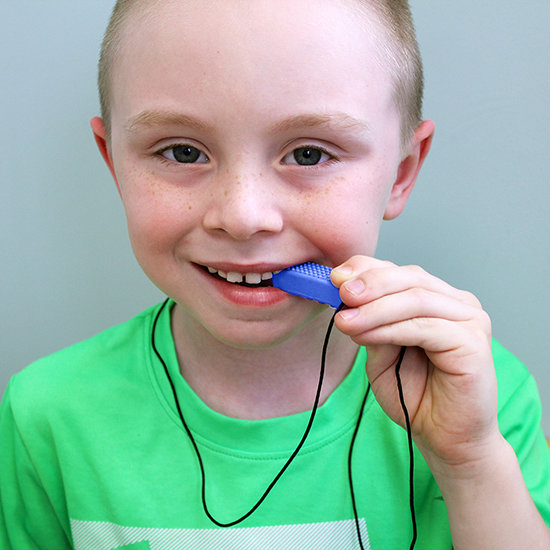Needing to Chew + Drooling
Posted by Debra C. Lowsky, MS, CCC-SLP on 9th Sep 2016
So my 8, almost 9 year old son loves your chewelry, especially your textured brick chewie. But what I'm finding lately is that it makes him drool like crazy!! He always drooled some before when chewing, but now it even drips down his chin. Any ideas on what we can do to stop the drooling? Do you have any chews that are less “drooly”? Thank you.
.

.
Hello! Chewing in general produces saliva - saliva helps break down food so that it can be formed into a cohesive bolus (ball of food) and then be swallowed. No matter what you chew on - gum, food, a chew tool, etc. - chewing still stimulates the body’s response to produce saliva. It’s up to us to then manage that saliva.
When chewing on chew tools you usually have to manage the saliva more than you do with food. This is because when chewing food, your mouth is usually closed whereas chewing on chew tools means the mouth is open. Food also absorbs some of the saliva, whereas chew tools don’t.
As for why the drooling has increased lately, sometimes there isn’t any one answer/reason. Sometimes it could be a side effect of a certain medication. Or it may be because chewing has increased (which is especially common during times of stress/anxiety/transition/change), so drooling increases in turn. It could also be because of low oral awareness. And so forth.
Granted it’s hard to tell without seeing him in person, but my gut says there may be some low oral awareness going on (also known as oral hyposensitivity). Drooling often goes hand in hand with hypo-sensitivities (if you can’t really feel the saliva, you can’t know that it needs to be managed). It’s also common for children with oral hypo-sensitivities to seek out oral input via chewing.
The best thing to do would be to consult a speech therapist, ideally one with oral motor experience (if you haven’t already). And possibly also an occupational therapist with sensory experience. In the meantime, things like gum massage, vibration with the Z-Vibe (which can help “wake up the mouth” - more on this in the first link below), a sensory diet (which an OT would put into place), and/or reminding him to swallow may help. You could practice a routine with him for instance and make it a habit to count to 5 chews then take a break and swallow.
You may also find some of the information in these related posts helpful:
Hypo-sensitivities vs hyper-sensitivities (defined + tips on what you can do for both)
Oral sensory strategies for kids who need to chew
Drooling - getting to the root of the problem
Targeting and addressing drooling
So in summary: there isn’t a chew tool that’s less "drooly," because it’s the act of chewing that produces the saliva, not the chew tool itself. However, usually any of our smooth chew tools are better when it comes to drooling (a textured surface can hold saliva more between the bumps and such). So instead of the textured Brick, a smooth Brick may be a better option for now, and there are other smooth chews here, too.
Between that and some of the ideas above, hopefully the drooling will decrease :)
Debbie
Debra C. Lowsky, MS, CCC-SLP
.
.

